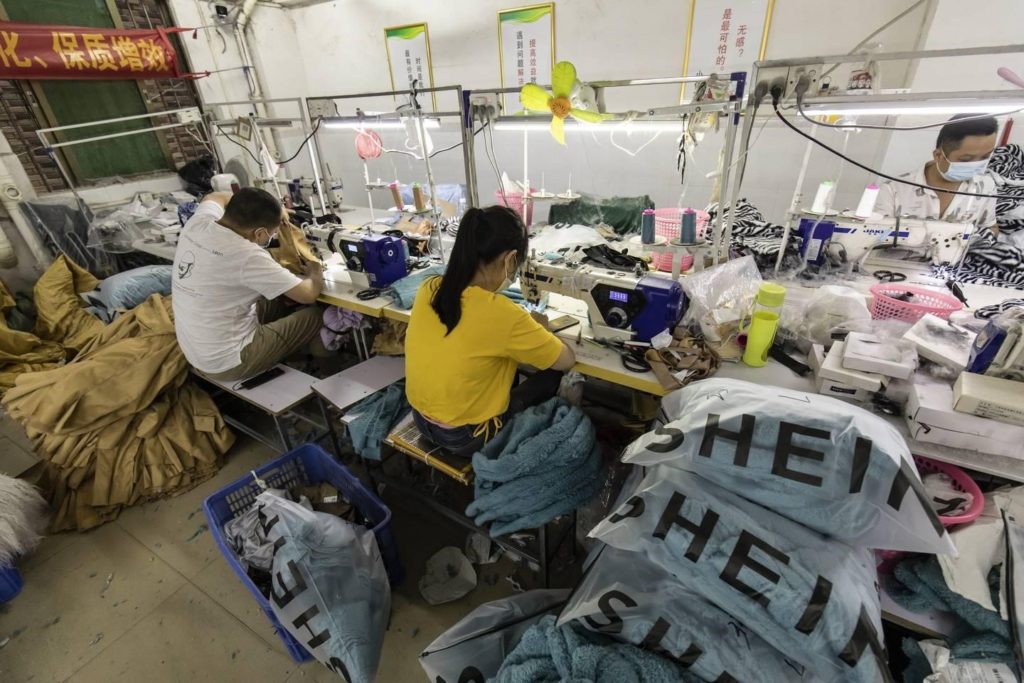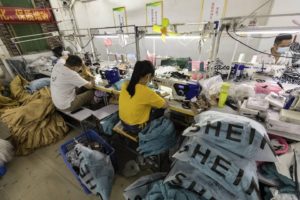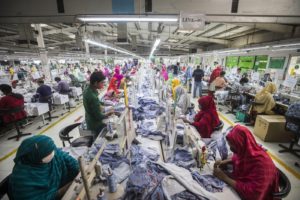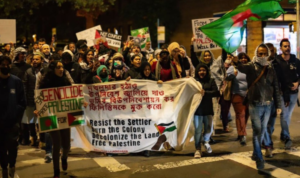Shein, Fast Fashion and the Garment Industry

Shein, Fast Fashion and the Garment Industry
By Zara Kabir
Garment workers in a Shein workshop in Guangzhou, China. Credit: Public Eye
.

Almost everyone owns something from Shein and even if we don’t, we’re definitely guilty of browsing. But, there are many reasons you should reconsider that next Shein haul, especially as a Bengali.
Having outpaced brands like Zara and H&M, Shein finds itself among a growing number of ‘ultra-fast fashion’ labels. A fully online storefront plus low prices for on-trend, often added in real-time, allowed Shein to hit the $100 billion mark in April.
However, behind the bargains lies exploitation. Zara, the pioneer of fast fashion, was once infamous for a production cycle of three to four weeks from design to packaging for distribution. Shein has cut this down to as little as three days, with thousands of items being added every day.
The breakneck speed of production is reflected in the quality of clothing. And with so many new items listed constantly, combined with low prices, Shein has helped create a culture in which clothing has little value beyond one wear. People’s presence on social media adds to the constant pressure to ‘refresh’ our wardrobes on a regular basis.
Shein’s supply chain is located almost exclusively in Guangzhou, China. Instead of large factories, according to research from Public Eye , the company employs locally-owned workshops in the region’s villages to produce its products. Producing thousands of garments a day, workers often put in 12-hours or labor per day. This adds up to 75 hours a week. That is in part because workers are often paid according to each item they produce; this not only encourages them to work long hours, but also requires them to. In fact, some of the workers who were interviewed said that they only take one day off a month. Such hours grossly violate Chinese labor laws that stipulate employees work 40 hours a week, 36 hours of overtime a month, with one day off per week.
Because Shein’s suppliers are informal sweatshops with no employer-employee contracts, this makes it easier for workers to be paid less for more time. Such working conditions parallel those of sweatshops in Bangladesh, where garment workers are also forced to work in horrific conditions for little to no pay.

Garment workers in Bangladesh. Credit: NurPhoto via Getty Images
After the collapse of the Rana Plaza in 2013, in which 1,134 workers were killed, Bangladesh promised to pass laws and strengthen regulations. While factory safety may have improved, workers themselves have remained targets of verbal and physical abuse. Later in 2018, the Bangladeshi government passed the Bangladesh Labour (Amendment) Act which raised the minimum age of children that could be employed from 12 to 14. However, since the start of the pandemic, many young boys have been forced into factories and sweatshops as their families struggled to stay afloat.
COVID-19 itself has spelled disaster for millions of Bangladeshi garment workers. Many lost their jobs while others hid their symptoms to go back to work, often in the same cramped production lines that likely got them sick in the first place. They knew not to ask questions at the risk of brutalization and losing their meager incomes. And in the face of declining sales over the past couple of years, workers are earning even less.
Bangladeshi garment workers remain some of the most exploited in the world today, and some of the lowest-paid too. While the legal minimum wage for garment workers is 8,000 Taka a month, or less than $80, many earn even less than that. Like garment workers in Guangzhou, many have no choice but to work overtime for 12-hour shifts in order to earn enough to feed their families.
Bangladesh itself is one of the world’s largest exporters of ready-made garments, second to China. No amount of legislation and/or international sanctions, however, can reform garment industries in these countries because they are, at the root, an exploitative model. This is no accident and is a system by design by the wider fashion industry.
While clothing production lines were once much smaller and localized, rapid globalization post-World War II shifted them to the Global South. This has allowed manufacturers to mass-produce cheaply made garments with little to no oversight. Companies maintain their profit margins for then cheaply sold goods by cutting wages and pocketing profits. The benefits are passed on to the consumer while workers are left with the short end of the stick.
No matter where we shop, laborers will have been exploited somewhere along the line.
Shopping ethically may not always be feasible for those of us living on a strict budget, however shopping consciously is possible. Do you really need another pair of super-cheap jeans that fall apart in a few months? Or are you better off spending a bit more on something that will last a couple of years or more?
As Bangladeshi diaspora, we should be mindful of the work that goes into the garments we wear. We should value the work of our people and be passionate about labor issues. If we care about garment workers in Bangladesh, we should care about the garment workers in China. Avoiding Shein may seem pointless, given how other brands also exploit workers, but it is a start in the right direction.
Read More
The Legacy of Boi Mela
Every year in February, the month-long national book fair welcomes...
Read MoreMillennial Amma: How to Explain a Global Crisis As a Parent
Rumki Chowdhury shares tips for how to talk to children...
Read MoreBegum Rokeya’s Millennials
A tribute to a pioneering Bengali feminist writer, educator and...
Read More



